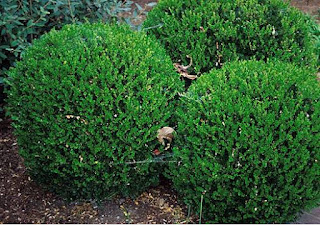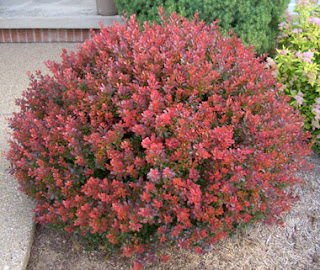This is a Guest Post by Terry Carter, a writer
at Apex Creative. She writes about a variety of NJ
Landscaping topics.
When beginning a landscaping project, it is incredibly
important to keep in mind the year-round appearance. What looks beautiful in
one season could look horrible in the winter. Of course, its part of nature
that plants will die, but that does not mean your yard cannot still look great.
For your next landscaping project, opt for these shrubs that look fantastic
most of the year.
Weigela
This family of shrubs is an easy-to-grow favorite for
flowerbed borders or the edges of yards. The shrubs grow to be four to five
feet in height. Beautiful bell-shaped flowers cover weigela plants and, in
many, the blooms last from spring through fall. Another favorable attribute is
the variegated foliage found on many varieties; when the blossoms are not out,
your yard still gets beautiful bushes with green and golden tones. Wine and
Roses Wiegela and Polka are pretty choices for a landscaping job.
Forsythia
This shrub is a very traditional choice for gardens. The
plants grow fairly tall, reaching up towards nine feet. The shrubs boast incredibly
beautiful yellow blossoms that appear in early spring. While this is a
deciduous plant, the bare branches are far from unattractive or boring. Because
of the tall shape, the forsythia looks astonishingly elegant in the winter.
Boxwood
While boxwood is an incredibly familiar landscaping shrub,
this list would be amiss without its name. The boxwood is an evergreen plant
that is typically used to create hedgerows. Choosing a variety of the shrub
allows you to foster your garden’s personality. While boxwoods do lend
themselves to formal gardens, dwarf varieties make attractive shrubs in any
style yard.
Barberry
Barberry plants make beautiful hedges to edge a yard. The
thorny shrubs can grow up to five feet in height. There are two varieties that
work great in yards. Pillar Barberry plants grow in an elegant, columnar shape.
These are great border plants. The Helmond Pillar is dark purple and looks
especially regal, while the Sunjoy Gold Pillar has astonishingly bright yellow
foliage that turns orange in the fall. For a shorter variety of barberry, the
Rose Glow Barberry grows in a shorter, bush like shape and has pretty purple
leaves.
Spirea
Because it is so easy to grow and so beautiful, spirea is a
staple in commercial landscaping. Spirea shows off even in its foliage, which
is blue-green in the spring and summer and turns an exquisite red-orange in the
fall. The flowers, of course, steal the show, however. The plant has arching
branches that hold cascades of white blossoms – or, depending on the variety
you choose, pink, red, or yellow.






No comments:
Post a Comment